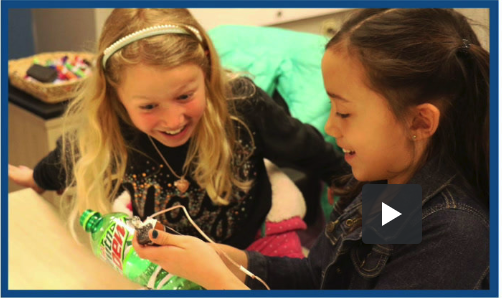 Have you noticed how small children love to pretend they are grown-ups?
Have you noticed how small children love to pretend they are grown-ups?
They bake in the kitchen center, fly airplanes, and dress up like pirates. In fact, a recent study suggests that preschoolers prefer the real-world to the pretend one. (Sorry Elsa and Buzz Lightyear!)
The future world of all things adult is not something scary to them. It’s exciting and fun. They can’t wait to grow up.
Fast forward a bit to the classroom. One of our most important jobs as teachers is to prepare children for the world of grown-ups…the real world. When the time comes, we want them to know how to work together, solve problems, innovate, investigate, and maybe—just maybe—make the world a better place.
That’s where authentic learning comes in. With a little planning and creativity, you can turn your lessons into real-world learning experiences that every child in the room will be talking about.
Making the shift
You’ve no doubt taught traditional lessons. And probably still do. They go like this. They are content-specific with instruction limited to math, science, or other subject area. They usually begin with an objective or a standard. Students do the work and hand it in to the teacher who then grades it. The lesson is instruction-driven with the teacher leading the way.
Authentic learning is a different experience all together. It is cross-curricular rather than limited to a subject area and connections are made between silos. It’s team-based, student-driven, open-ended, globally directed, and super-fun and stimulating for kids. It expands a student’s view of the world way beyond the classroom. Learners become genuinely curious, more creative, and thoroughly engaged.
Hello, world!
Would you like to offer your students authentic learning experiences, but you’re not sure where to begin? Below are some things to think about that will shape your mindset and put you on the right path. After that, you’re free to tweak and experiment as you find your own course.
As you plan a lesson, ask yourself:
- Does it provide a motivational challenge at the start? A compelling question or a provocative statistic offered at the beginning of a lesson can hook and engage students right away.
- Does it offer real-life tasks that give students the opportunity to connect directly to the world and make it a better place? There’s nothing more real-world than pitching a business proposal or creating a prototype of a new product.
- Is collaboration a key component? When children work together and cooperate, there is a natural tendency to own the learning. Your classroom will be a bit nosier, but that’s a good thing!
- Does it allow students to interact with the community? There’s a big wonderful world outside the four walls of the classroom. Bring the world in to your students electronically —invite a community expert in to the classroom or skype an international expert. Or bring the students into the world—have them conduct a needs assessment in the community or interview residents of a retirement community and create books about their lives.
- Have you taken on the new role of facilitator, as opposed to teacher? Authentic learning requires a new style of educator—a guide on the side who allows the students to drive the instruction.
This new approach to learning will take a little planning, thought, and time. But once you get the hang of it, it’s really pretty simple. Mix together collaboration, real-world experts, and cross-curricular content and you’ll be on your way to creating the most worthwhile and memorable learning experiences of all.
As always, reach out and let us know what you think!
For more information:
View the 30-minute webinar on this topic entitled Keeping it Real: Learning Experiences that Make a Difference
Also, check out these downloadable resources within the webinar:
